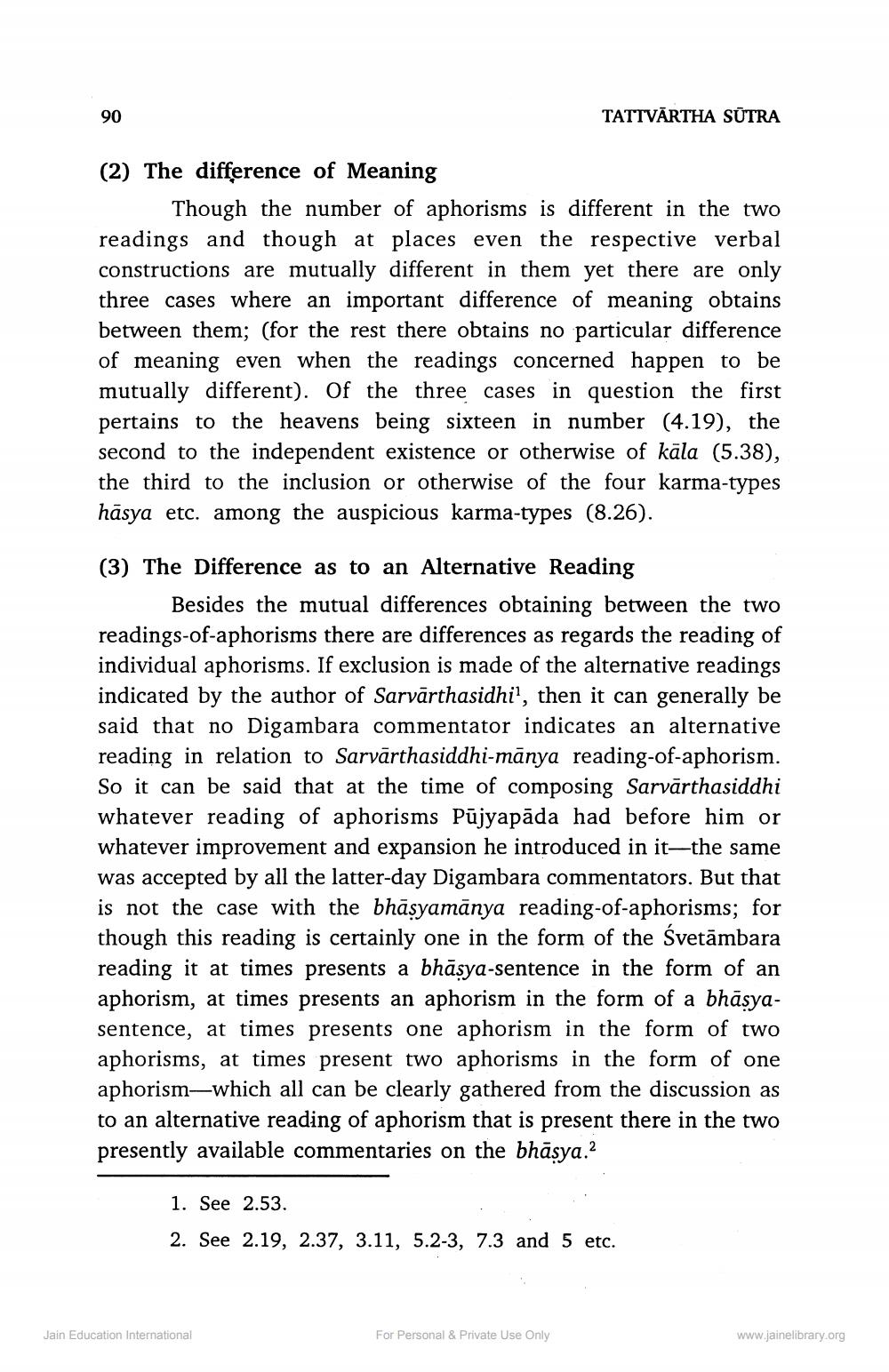________________
90
TATTVĀRTHA SŪTRA
(2) The difference of Meaning
Though the number of aphorisms is different in the two readings and though at places even the respective verbal constructions are mutually different in them yet there are only three cases where an important difference of meaning obtains between them; (for the rest there obtains no particular difference of meaning even when the readings concerned happen to be mutually different). Of the three cases in question the first pertains to the heavens being sixteen in number (4.19), the second to the independent existence or otherwise of kāla (5.38), the third to the inclusion or otherwise of the four karma-types hāsya etc. among the auspicious karma-types (8.26).
(3) The Difference as to an Alternative Reading
Besides the mutual differences obtaining between the two readings-of-aphorisms there are differences as regards the reading of individual aphorisms. If exclusion is made of the alternative readings indicated by the author of Sarvārthasidhi', then it can generally be said that no Digambara commentator indicates an alternative reading in relation to Sarvārthasiddhi-mānya reading-of-aphorism. So it can be said that at the time of composing Sarvārthasiddhi whatever reading of aphorisms Pūjyapāda had before him or whatever improvement and expansion he introduced in it—the same was accepted by all the latter-day Digambara commentators. But that is not the case with the bhāsyamānya reading-of-aphorisms; for though this reading is certainly one in the form of the Svetāmbara reading it at times presents a bhāsya-sentence in the form of an aphorism, at times presents an aphorism in the form of a bhāsyasentence, at times presents one aphorism in the form of two aphorisms, at times present two aphorisms in the form of one aphorism—which all can be clearly gathered from the discussion as to an alternative reading of aphorism that is present there in the two presently available commentaries on the bhāsya.?
1. See 2.53. 2. See 2.19, 2.37, 3.11, 5.2-3, 7.3 and 5 etc.
Jain Education International
For Personal & Private Use Only
www.jainelibrary.org




